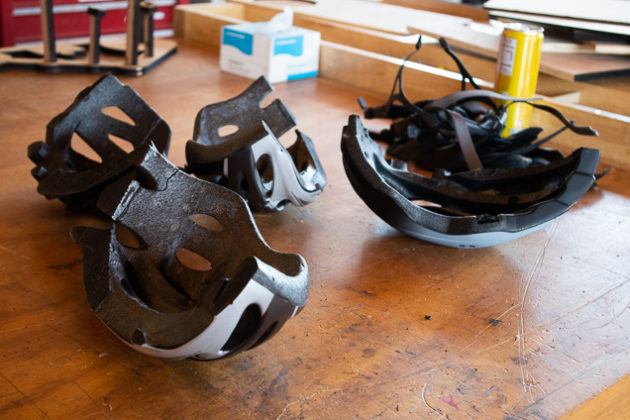Gone are the days when wearing a helmet was considered “uncool.” Now it’s a requirement for not just organized rides and races, but many cities have made it illegal to ride without a helmet.
Modern road helmets are an engineering marvel. They strike a fine balance between protection, aerodynamics, ventilation and weight, and most of the mainstream brands have developed some impressive offerings at a variety of price points.
It’s often recommended that a helmet worn frequently should be replaced every 3 to 5 years. The reason is that the foam degrades due to sun, heat, salty sweat and other environmental factors, added to the usual knocks of regular cycling activity.
These things make the foam unable to provide the full protection it’s designed for in the event of a head impact. A helmet should certainly be replaced after it’s damaged in a crash or even dropped hard.
Paul Caswell, brand manager for Giro and Bell helmets distributor says: “We normally recommend a new lid every three years depending on usage as even with no impacts there is a constant knocking and pressing of the EPS as the helmet is stored, dropped, placed on hard surfaces etc. Due to tiny impact after tiny impact over time, the EPS will gradually lose its volume making it less able to deal with the energy in the unfortunate event of an impact. Of course the more the helmet is used the more it will deteriorate, so one rule for all does not work here, but three years is a good guide.”
However, some experts maintain that a helmet will be protective no matter what its age as long as it’s undamaged. In their view, there is no age limit.
If you crash and hit your head, it’s time to replace your helmet. The thin plastic shell around the helmet can be pretty resistant to scratching and tearing, but even the smallest impact can compromise the structure of the internal foam shell.
A helmet’s main job is to disperse the energy from colliding with the ground away from the head, and this is accomplished by the foam cracking and breaking down under impact. If it has done its job once already, it won’t be as effective the next time you take a tumble—and this can lead to serious injury.














